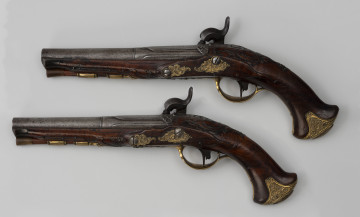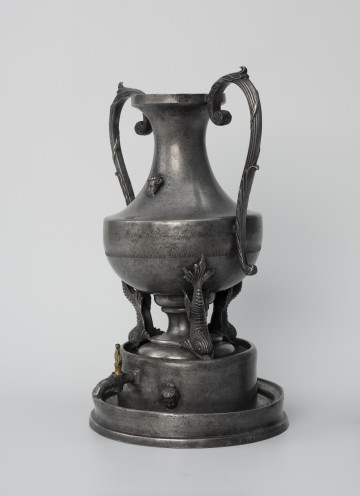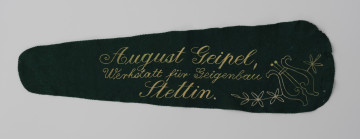
Pair of percussion cap pistols
circa 1773 — 1811
National Museum in Szczecin
Part of the collection: Militaria
The first designs of breechloading rifles were made as early as the 14th century, but the major problem they faced was the tightness of their seals during the release of gunpowder gases. It was not until the 19th century that satisfactory designs for locking the rear of the barrel were developed to minimise the danger to the shooter. An interesting example of a breech-loading pistol design is the duel pistol manufactured in Szczecin around the middle of the 19th century by local gunsmith Carl August Tank (Tanke or Tanck in other sources), whose Szczecin operation dates from 1848 to 1869. This gun has an eight-rifled, thick-walled barrel, an action typical for a breechloader, and a percussion cap, characteristic of muzzleloader firearms. The hybrid design of this gun did not become widespread and is therefore rarely seen. Bérenger system designs, with a rotating block action into which the bullet was loaded, were more popular. In the featured weapon, turning the key sideways breaks the barrel downwards, as in the design of French gunsmith Casimir Lefaucheux, who constructed the first break-action shotgun in Paris in 1832. In his for paper cartridges weapon, however, the cock struck the cartridge pin, whereas the featured example has a cock and a cap nipple, which were designed to trigger an explosion in the barrel and thus eject the projectile. Justyna Bądkowska
Author / creator
Object type
pistol
Technique
gunsmithing techniques, engraving
Material
wood, steel
Origin / acquisition method
purchase
Creation time / dating
Creation / finding place
Owner
Muzeum Narodowe w Szczecinie
Identification number
Location / status

circa 1773 — 1811
National Museum in Szczecin

1751 — 1825
National Museum in Szczecin

około 1900
National Museum in Szczecin
DISCOVER this TOPIC
Museum of King Jan III's Palace at Wilanów
DISCOVER this PATH
Educational path